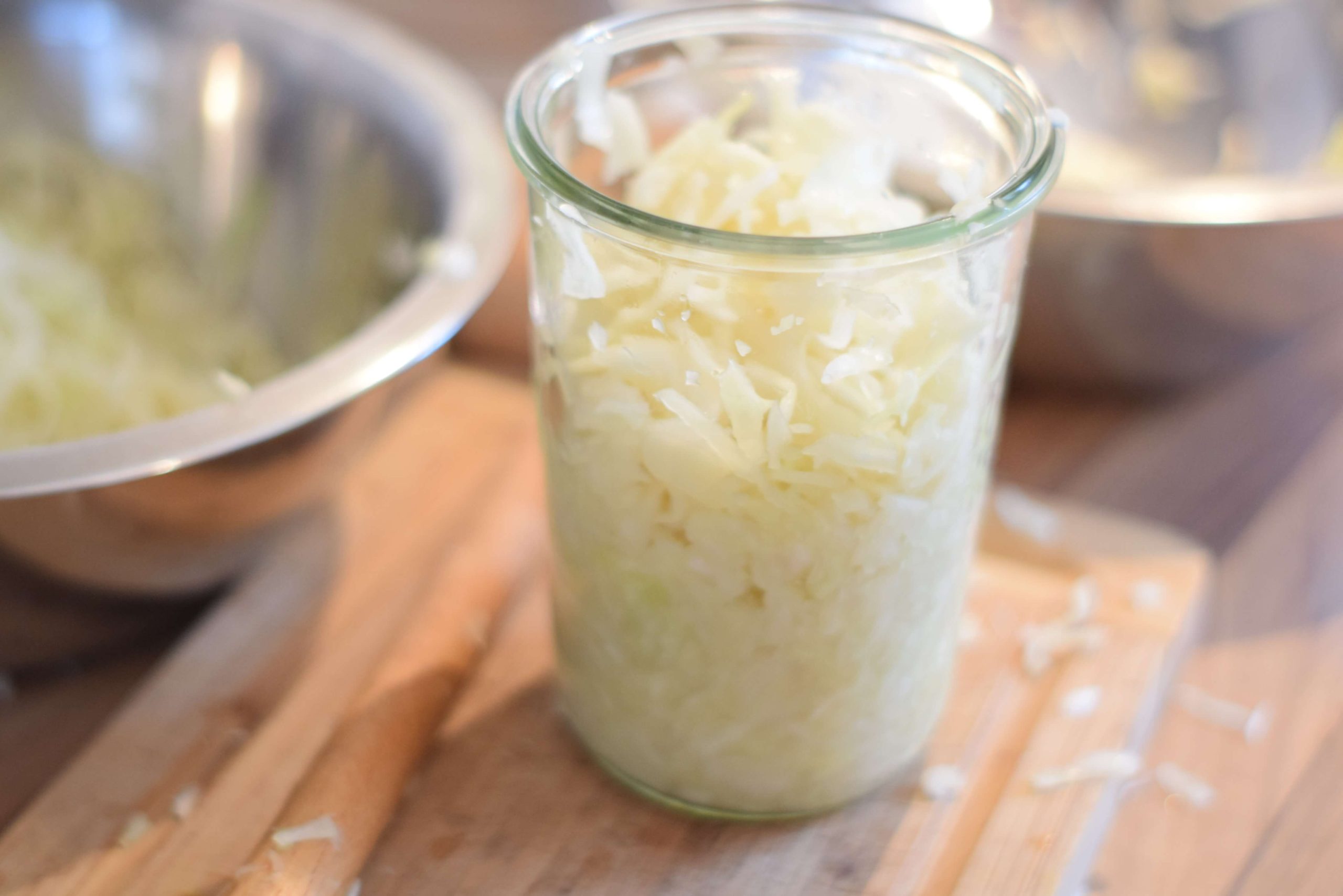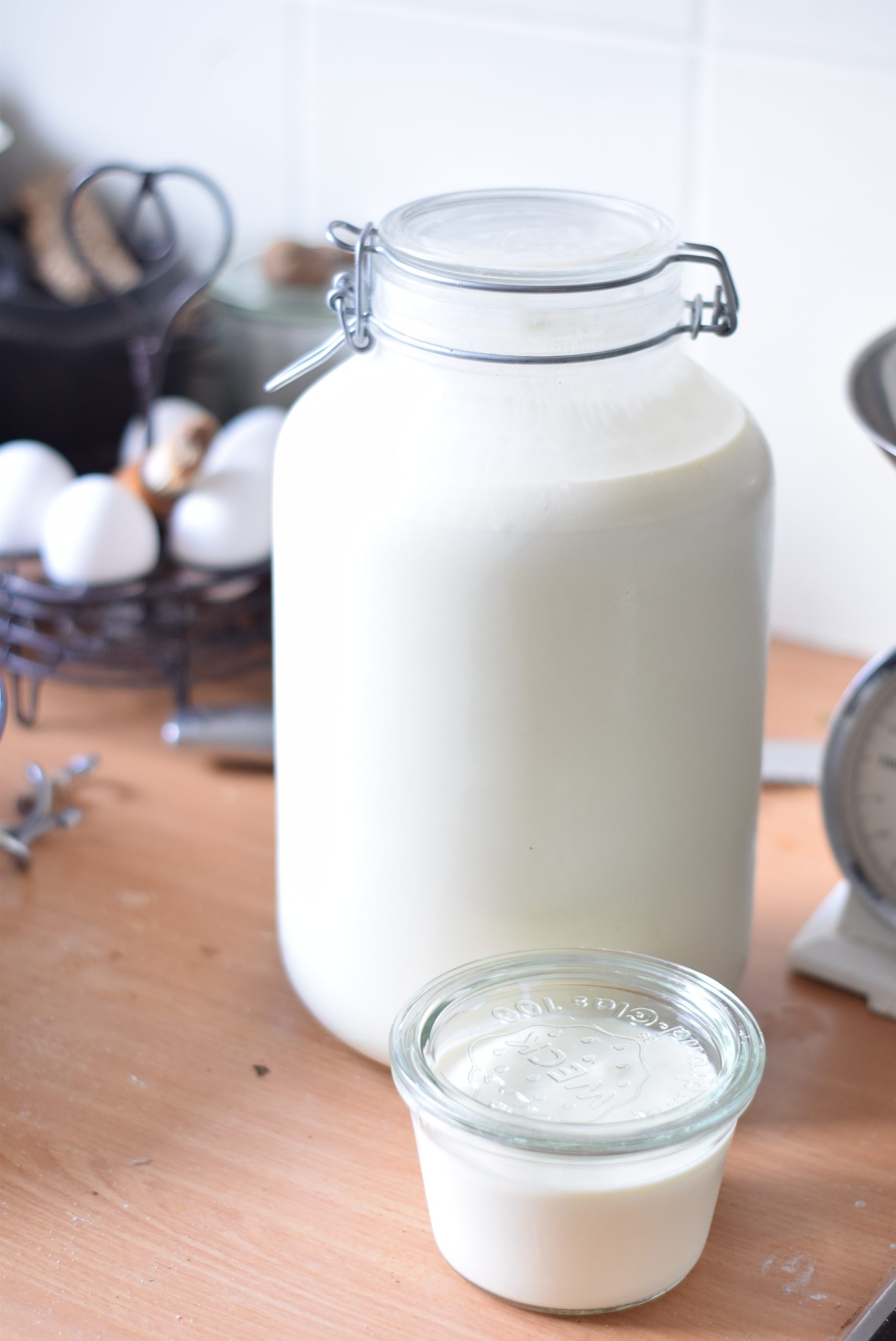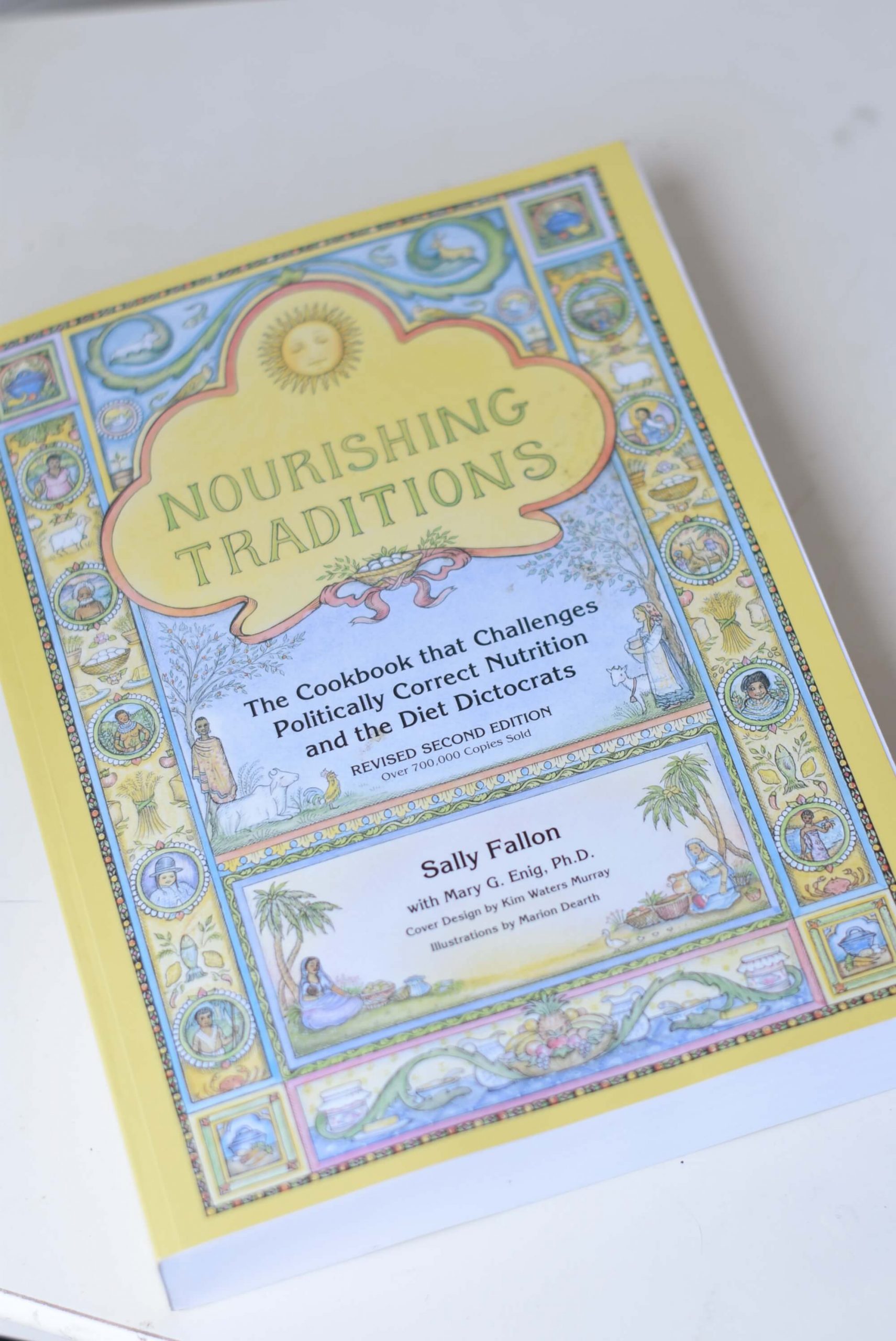The best organic sauerkraut contains live cultures of beneficial bacteria, which are produced during the fermentation process. Raw sauerkraut is considered one of the best probiotic foods as it contains lactic acid bacteria, such as Lactobacillus plantarum, L. brevis, and Leuconostoc mesenteroides.
The best organic sauerkraut containts live probiotics that are essential for the gut health of people and play a vital role in maintaining overall health. Some of them are naturally present on the cabbage and only need to be “activated”.
This post may contain affiliate links. That means I make a small commission for purchases made through these links, at no extra cost to you. All opinions are my own. You can read my full disclosure here.

The consumption of probiotic sauerkraut can help balance the gut flora by increasing the number of beneficial bacteria while reducing harmful bacteria. The best organic sauerkraut is formed because of fermentation and the acids that form. This, in turn, supports the immune system and microbiome health, leading to many health benefits.

Live cultures
Consuming unpasteurized foods with live cultures, such as probiotic sauerkraut, can promote the growth of loads of good bacteria in the digestive tract. These good bacteria help break down food, synthesize vitamins, and support the immune system.
Probiotic sauerkraut is a great addition to a healthy daily diet. When buying sauerkraut, it is important to look for organic brands with sea salt and live probiotics. This ensures that the sauerkraut is made with high-quality ingredients and has not been subjected to harmful processing methods that could kill off the live cultures.
In summary, probiotic foods, such as sauerkraut, can be incredibly healthy due to their live culture content. They can help support gut health, microbiome health, and the immune system, among other benefits. When looking to buy sauerkraut, it is important to choose high-quality, organic brands with live cultures to reap the full health benefits. But it’s even better to make it yourself! More on that later. First, let’s look at the fermentation process in a bit more detail.
The fermentation process
The fermentation process for making sauerkraut is a natural and simple method that involves using salt water brine to preserve raw cabbage. The process of fermentation involves the conversion of sugars in the cabbage into lactic acid through the action of lactic acid bacteria, which are naturally present on the cabbage.
Different sauerkrauts can be made using different methods and ingredients. Some recipes call for added sugar or other flavorings, while others use traditional methods and ingredients. Canned sauerkraut is also available, but it may not have the same nutritional benefits as homemade sauerkraut.
Tradition and high quality
To get the best results from your own sauerkraut, it is important to follow a guide or traditional recipe and to use high-quality ingredients. Sauerkraut is a great source of probiotics and digestive enzymes, which can help to alleviate digestive issues and support overall gut health.
In summary, making your own sauerkraut with raw cabbage and a salt water brine is a simple and natural way to enjoy the nutritional benefits of probiotics and digestive enzymes. By using traditional methods and high-quality, organic ingredients, you can create a delicious and healthy addition to your diet. All because of a simple fermentation process.
Vitamin K2

Vitamin K2 is a fat-soluble vitamin that is essential for blood clotting, healthy teeth, bone health, and heart health. It is found in fermented foods like sauerkraut, which is made from organic cabbage that has been fermented with lactic acid bacteria.
According to Weston Price, a well-known researcher in the field of nutrition, sauerkraut is one of the top dietary protocols for ensuring optimal health. Sauerkraut products made using the original recipe and organic cabbage are considered great sources of vitamin K2.
Bioavailability of vitamin k2
Thorough research suggests that sauerkraut fermentation increases the bioavailability of vitamin K2 in cabbage, making it easier for the body to absorb. Supermarket sauerkraut, on the other hand, may not contain enough vitamin K2 due to the use of vinegar instead of the traditional fermentation method.
The recommended amount of sauerkraut to consume for health benefits is about two tablespoons per day. This amount can provide the body with enough vitamin K2 to support bone health and heart health. The current state of your gut health can also influence how much sauerkraut you should consume. A cup of kraut per day is a good starting point, but some individuals may need to consume more or less depending on their individual needs.
Overall, sauerkraut is a tasty and nutritious addition to any diet and can provide many health benefits.
Other vitamin k2 rich foods
Vitamin k2 is an essential fat-soluble vitamin that plays a role in teeth, bone and heart health. Here are some other foods that are rich in vitamin K2:
Natto:
This is a Japanese dish made from fermented soybeans and is considered to be the richest source of vitamin K2.
Cheese:
Cheeses such as Gouda, and Emmentaler are good sources of vitamin K2.
Egg yolks:
Egg yolks contain small amounts of vitamin K2.
Chicken:
Chicken is a good source of vitamin K2, especially if it is pasture-raised.
Butter and ghee:
Butter and ghee from grass-fed cows are good sources of vitamin K2.
Liver:
Animal liver, especially chicken liver is considered to be a good source of vitamin K2, Other types of animal liver, such as beef liver and pork liver, also contain vitamin K2. Overall, liver is a nutrient-dense food that contains a variety of vitamins and minerals, including vitamin K2, and can be a healthy addition to a balanced diet.
Sauerkraut:
Fermented foods like sauerkraut also contain vitamin K2.
Miso:
Miso, a traditional Japanese seasoning made from fermented soybeans, is another good source of vitamin K2.
Fish:
Certain types of fish, such as salmon and tuna, contain small amounts of vitamin K2.
It’s important to note that the amount of vitamin K2 in these foods can vary depending on factors such as how the food was raised or prepared.

Resources
The book “Nourishing Traditions” by Sally Fallon is a good book to read if you want to know more about healthy foods because it presents a different approach to nutrition compared to the conventional Western diet. The book emphasizes the importance of traditional and whole foods in promoting health and wellness.
The modern diet, which is high in processed foods and low in nutrients, is responsible for many health problems. To counteract this, “Nourishing Traditions” advocates for a return to traditional diets that are rich in nutrient-dense foods like organ meats, bone broth, fermented foods, and raw dairy products.
The book also provides recipes and cooking techniques that support this traditional approach to eating. It emphasizes the use of natural, unprocessed ingredients, and includes tips on how to prepare foods in a way that preserves their nutritional value.
Overall, “Nourishing Traditions” is a comprehensive guide to healthy eating that emphasizes the importance of nutrient-dense, whole foods, and traditional preparation methods. It is an excellent resource for anyone looking to improve their health through nutrition.
A more in-depth review of the book Nourishing Traditions can be found in the post on best books for the (new) homemaker.
Preparation
To make your own sauerkraut, start with fresh, raw organic cabbage. Classic sauerkraut typically uses only whole-food ingredients, including raw cabbage, sea salt, and optional added sugar or spices for flavor. However, raw sauerkraut can also be made without added sugar.
How to make the best organic sauerkraut?
To begin, slice the cabbage thinly and massage it with salt to release its natural juices. The salt acts as a preservative and also helps to create an environment that is conducive to fermentation. Add some vitamin C, which acts as an antioxidant and helps to maintain the cabbage’s nutritional benefit during the fermentation process.
Once the cabbage has been massaged, pack it tightly into a jar or crock and cover it with salt water brine. The brine should be made with filtered water and high-quality sea salt. The amount of salt needed will depend on the size of the container and the amount of cabbage being used.
Tips for making the best organic sauerkraut
The mixture should be left to ferment for several days or even weeks, depending on the desired level of sourness. During this time, the farmhouse culture of lactic acid bacteria will grow and develop, providing the probiotic power that makes sauerkraut so beneficial for the gut.
Place the glass jar containing the sauerkraut on a plate or in a dish. As the cabbage starts to ferment, the naturally produced gas may cause the brine to overflow. You will notice the smell becomes sourer, almost yogurt-like after a week or so. Depending on the desired sourness, you can leave the sauerkraut a little longer on the counter.
You might like…
Click on the blog post title below to keep reading and be encouraged.
Storage
To store sauerkraut, it is best to keep it refrigerated in glass jars or airtight containers once it’s done fermenting. Adding caraway or mustard seeds, or a few bay leaves to the sauerkraut can help to enhance its flavor and provide additional health benefits.
If purchasing sauerkraut from a grocery store, look for brands that use glass jars and small batches for the freshest and most flavorful product. Bear in mind that pasteurized sauerkraut is still easier to digest, but lost many of the probiotic bacteria.
It is also important to use common sense when storing sauerkraut and to check for any signs of spoilage, such as mold or an off smell. Sauerkraut can last for months in the fridge because of the healthy bacteria, which keep it from spoiling. But, if you’re in doubt, better stay on the safe side.
If you are making your own sauerkraut using the canning process, it is important to follow safe canning procedures to prevent bacterial growth and ensure food safety.
Recipes with sauerkraut
Variations
There are several spices and herbs that you can add to sauerkraut to enhance its flavor and nutritional value. Here are some options:
Juniper berries: These berries have a piney flavor that pairs well with sauerkraut. They also have antimicrobial properties that can help support wellness protocols.
Caraway seeds: These seeds have a slightly sweet and nutty flavor that complements sauerkraut. They also aid digestion and can help reduce gas.
Dill
Dill is a popular herb that adds a fresh, tangy flavor to sauerkraut. It also has antioxidant properties and can help regulate blood sugar.
Garlic
Garlic adds a pungent, savory flavor to sauerkraut. It also has anti-inflammatory properties and can help support heart health.
Black pepper
A pinch of black pepper can add a subtle heat and earthy flavor to sauerkraut. It can also help enhance nutrient absorption.
When it comes to choosing the best brands of sauerkraut, look for organic products that are made with whole grains and have a low sodium content to support healthy sodium intake.
What to eat with the best organic sauerkraut?
Sauerkraut can be enjoyed in many ways, including as a topping for hot dogs, as a side dish for salads, or as a standalone snack. Experiment with different herbs and spices to find your perfect flavor combination!
Sauerkraut is a popular fermented cabbage dish that originated in Germany, and it pairs well with a variety of foods. Here are some suggestions:
Sausages
Sauerkraut and sausages are a classic combination in German cuisine. Try serving sausages like bratwurst, knackwurst, or weisswurst with a side of sauerkraut.
Pork
Sauerkraut is often served with pork dishes like roasted pork loin or pork chops. The tangy flavor of sauerkraut helps to cut through the richness of the pork.
Sandwich
A sandwich made with beef, Swiss cheese, a creamy dressing, and sauerkraut, all served on rye bread. It’s a delicious and classic sandwich.
Potatoes
Serve sauerkraut with boiled or roasted potatoes for a hearty and flavorful side dish.
Seafood
Sauerkraut can also pair well with seafood dishes like baked cod or smoked salmon. The tangy flavor of sauerkraut can help to balance out the richness of the fish.
Grilled cheese
Add some sauerkraut to a grilled cheese sandwich for a tangy twist on a portion of classic comfort food.








